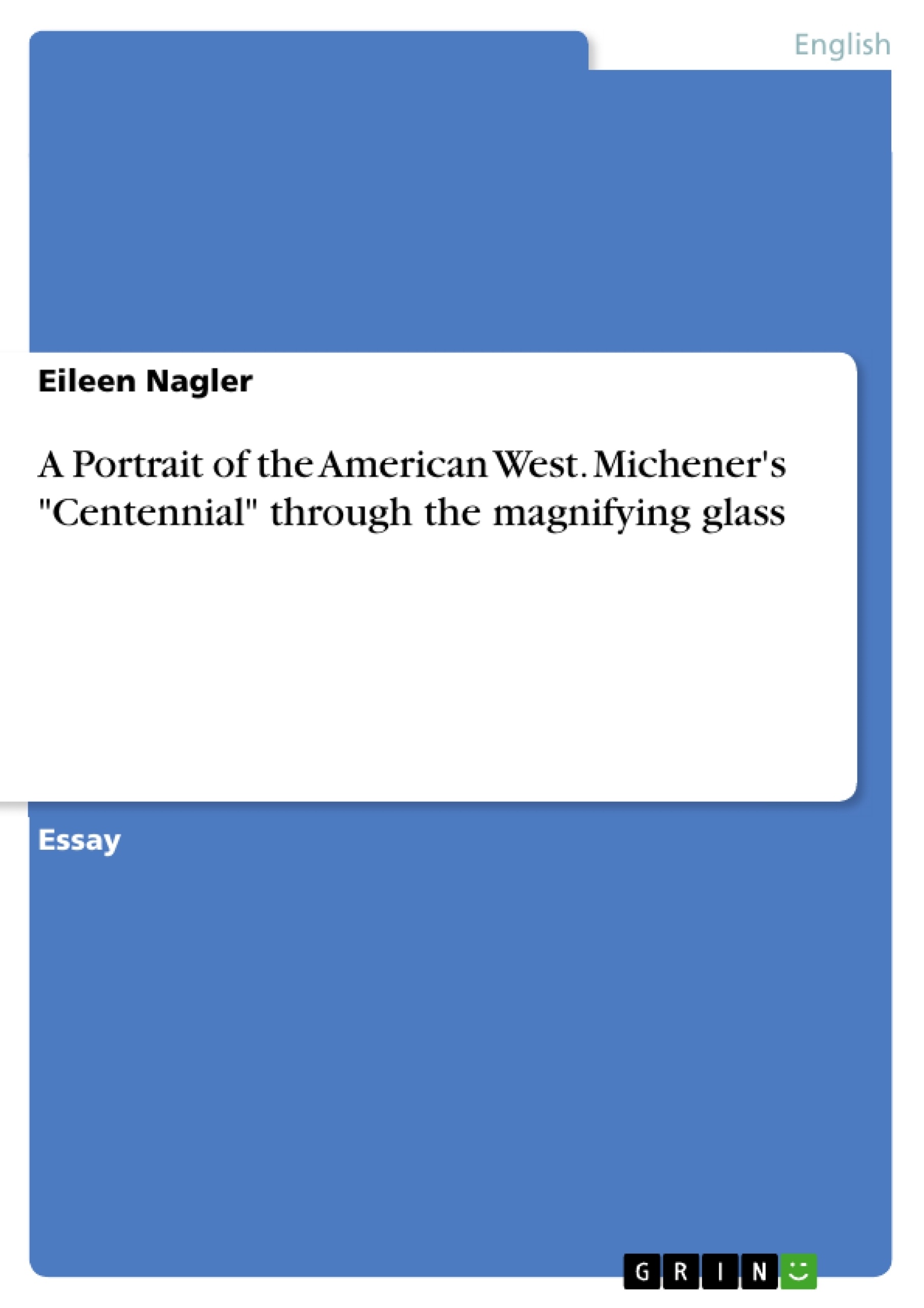Michener’s Centennial describes the history of the American West based on the fictional city Centennial, which is located in the plains of northeast Colorado. In this connection, the author uses a particular viewpoint to trace the development of that region and its inhabitants. This essay will consider the question what constitutes the specific point of view which makes this novel so interesting and outstanding.
Table of Contents
- Framing and Embedded Narrative
- Multiple Perspectives
- The Historizing of History
Objectives and Key Themes
This essay aims to analyze the unique point of view employed in James A. Michener's novel "Centennial," which chronicles the history of the American West through the fictional city of Centennial in northeastern Colorado.
- The novel's structure, encompassing framing and embedded narratives, provides multiple perspectives on Colorado's development.
- Michener's use of an omniscient point of view presents a comprehensive portrait of the West, encompassing human and animal perspectives and the land itself.
- The novel blends fictional elements with historical events, creating a "historizing" perspective that engages the reader while providing historical insights.
- Michener's work highlights the interconnectedness of land, animals, and humans, offering a microcosm of the American West's growth.
- The novel's diverse cast of characters, including Native Americans, European settlers, and Hispanic Americans, reflects the region's rich ethnical pluralism.
Chapter Summaries
The first chapter introduces Dr. Lewis Vernor, an historian tasked with verifying historical facts for a book on Centennial. The embedded narrative begins with the story of Levi Zendt, a Mennonite settler from Pennsylvania, who arrives in Colorado and contributes to the development of the region. Hans "Potato" Brumbaugh, a Volga German farmer, plays a key role in establishing the sugar beet industry in Colorado. Later chapters delve into the lives of various individuals, including Native American characters like Lame Beaver, the cowboy James "Jim" Lloyd, and the Grebe family, who grapple with dryland farming.
Keywords
The key themes and concepts explored in this essay include framing narrative, embedded narrative, multiple perspectives, historizing, fictional and non-fictional elements, the American West, Colorado, Native American culture, settlers, and ethnical pluralism.
- Quote paper
- Eileen Nagler (Author), 2015, A Portrait of the American West. Michener's "Centennial" through the magnifying glass, Munich, GRIN Verlag, https://www.grin.com/document/441020



